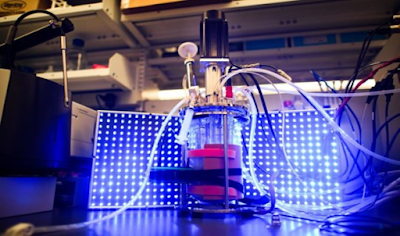Do You Know light is used to turn yeast into biochemical factories?
We can say that the
current research of microbiology
has attain its peak by a research which speaks about various interesting facts
how light has been utilised?
These specialists have
utilized a blend of light and genetic material for controlling metabolism, or
essential chemical process, of a living cell. Expanding on systems that as of
now have changed the field of neuroscience, the scientists utilized light to
control genetically altered yeast and increment its yield of financially
important chemicals.
Researchers have
figured out how to utilize light to control exact gatherings of neurons to
better comprehend the activity of the cerebrum, an improvement that has changed
regions of neuroscience leading to a comparative contradiction towards
microbes.
Yeast has been utilized
for a considerable length of time to influence bread, to wine and brew. Through
aging, yeast cells change sugar into chemicals that influence bread to rise and
transform grape juice into wine.
Utilizing their new
strategy, the Princeton scientists have now utilized maturation and genetically
designed yeast to create different chemicals including lactic corrosive,
utilized as a part of sustenance generation.
Light played a key part
in the examination since it enabled the analysts to switch on qualities that
they had added to the yeast cells. This has become a contradiction towards the
growth microbial agents during fermentation process as well during the
maturation period since they were genetically extracted for culturing. These
specific qualities are touchy to light, which can trigger or stifle their
movement.
Don’t you want to keep
you’re self-updated then come and explore the world of Microbiology, Virology
and Infectious Diseases along with top Professionals at Microbiology
Meet 2018.
Do not hesitate to contact us, please do revert us
back for any further quires.
Contact:
Bernice Edison | Program Manager |
Microbiology Meet 2018
Email:
microbiology@vaccineconference.com




Comments
Post a Comment